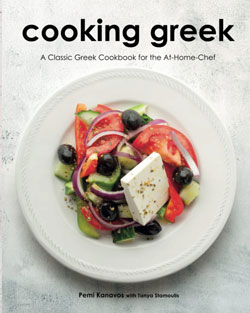ssherie_
Active member
It's the time of year for Stifado! I thought I would share my recipe. I do a lot of different things with it- using different meats, etc. I would love to hear how you guys make it!
- 2 pounds of beef or rabbit, cut into chunks - I only occasionally use lamb but don't really like it.
- 2 pounds of small onions, peeled
- 3-4 cloves of garlic, minced
- 2 tablespoons of tomato paste
- 1 cup of dry red wine
- 1 cup of beef or vegetable broth
- 1 cinnamon stick
- 2 bay leaves
- 1 teaspoon of dried oregano
- 1 teaspoon of dried thyme
- Salt and black pepper to taste
- Olive oil
Instructions:
1. Before you start, make sure to prepare the onions by peeling them and leaving them whole. This is essential for the texture of the dish.
2. In a large pot or Dutch oven, heat up a few tablespoons of olive oil over medium-high heat.
3. Once the oil is hot, add the meat and brown it evenly on all sides. This will take about 5-7 minutes.
4. Remove the meat from the pot and set it aside.
5. Next, add the onions to the pot and cook them for 4-5 minutes until they start to soften and caramelize. Add the minced garlic and cook for an additional 2 minutes.
6. Add the tomato paste and stir until it's well combined with the onions.
7. Pour in the red wine and beef broth, and stir to combine.
8. Return the meat to the pot, along with the cinnamon stick, bay leaves, dried oregano, and thyme.
9. Season with salt and black pepper to taste.
10. Bring the stew to a simmer, then reduce the heat to low, cover the pot, and let it cook for about 2-3 hours. Stir occasionally to prevent sticking.
11. By the end of the cooking time, the meat should be tender and the onions should be almost meltingly soft.
12. Taste the stew and adjust the seasoning as necessary. If the sauce is too thin, you can thicken it up by mixing a tablespoon of cornstarch with a tablespoon of cold water, then pouring it into the stew and stirring to combine.
13. Serve hot with crusty bread, or over rice, pasta, or potatoes.
- 2 pounds of beef or rabbit, cut into chunks - I only occasionally use lamb but don't really like it.
- 2 pounds of small onions, peeled
- 3-4 cloves of garlic, minced
- 2 tablespoons of tomato paste
- 1 cup of dry red wine
- 1 cup of beef or vegetable broth
- 1 cinnamon stick
- 2 bay leaves
- 1 teaspoon of dried oregano
- 1 teaspoon of dried thyme
- Salt and black pepper to taste
- Olive oil
Instructions:
1. Before you start, make sure to prepare the onions by peeling them and leaving them whole. This is essential for the texture of the dish.
2. In a large pot or Dutch oven, heat up a few tablespoons of olive oil over medium-high heat.
3. Once the oil is hot, add the meat and brown it evenly on all sides. This will take about 5-7 minutes.
4. Remove the meat from the pot and set it aside.
5. Next, add the onions to the pot and cook them for 4-5 minutes until they start to soften and caramelize. Add the minced garlic and cook for an additional 2 minutes.
6. Add the tomato paste and stir until it's well combined with the onions.
7. Pour in the red wine and beef broth, and stir to combine.
8. Return the meat to the pot, along with the cinnamon stick, bay leaves, dried oregano, and thyme.
9. Season with salt and black pepper to taste.
10. Bring the stew to a simmer, then reduce the heat to low, cover the pot, and let it cook for about 2-3 hours. Stir occasionally to prevent sticking.
11. By the end of the cooking time, the meat should be tender and the onions should be almost meltingly soft.
12. Taste the stew and adjust the seasoning as necessary. If the sauce is too thin, you can thicken it up by mixing a tablespoon of cornstarch with a tablespoon of cold water, then pouring it into the stew and stirring to combine.
13. Serve hot with crusty bread, or over rice, pasta, or potatoes.



